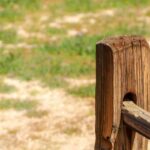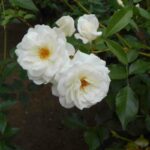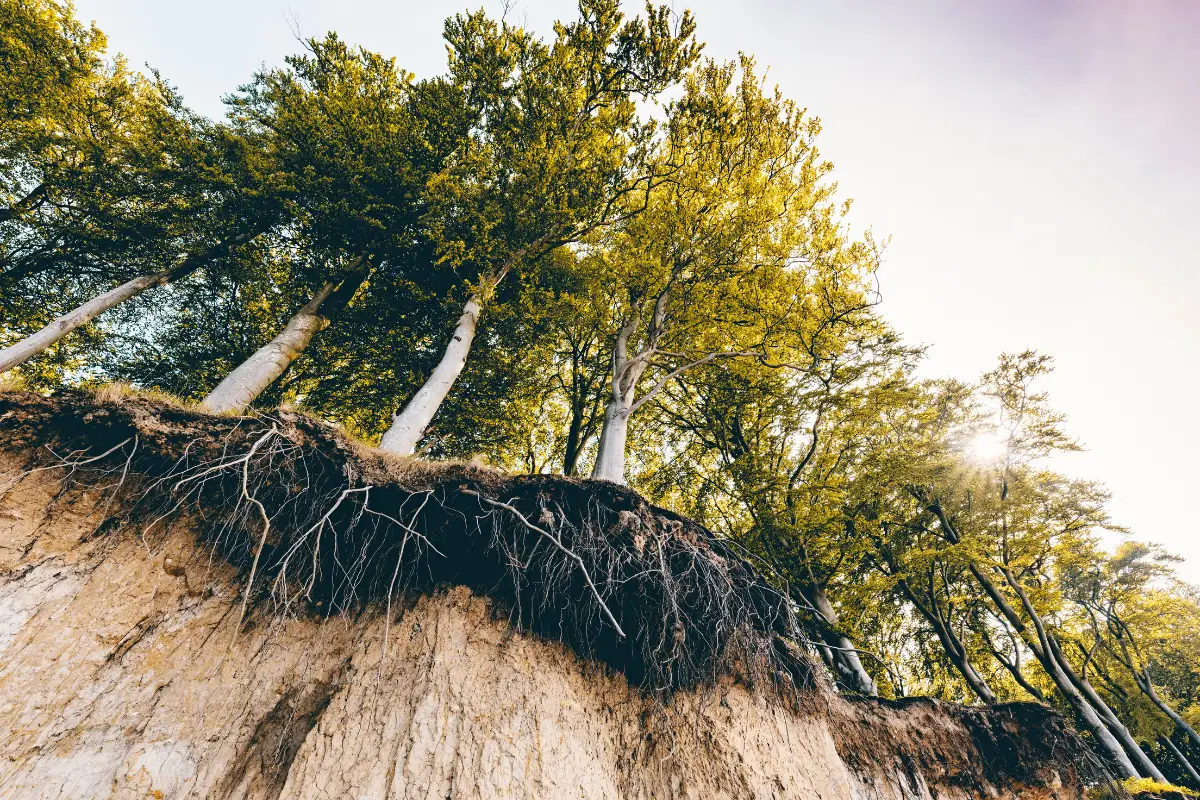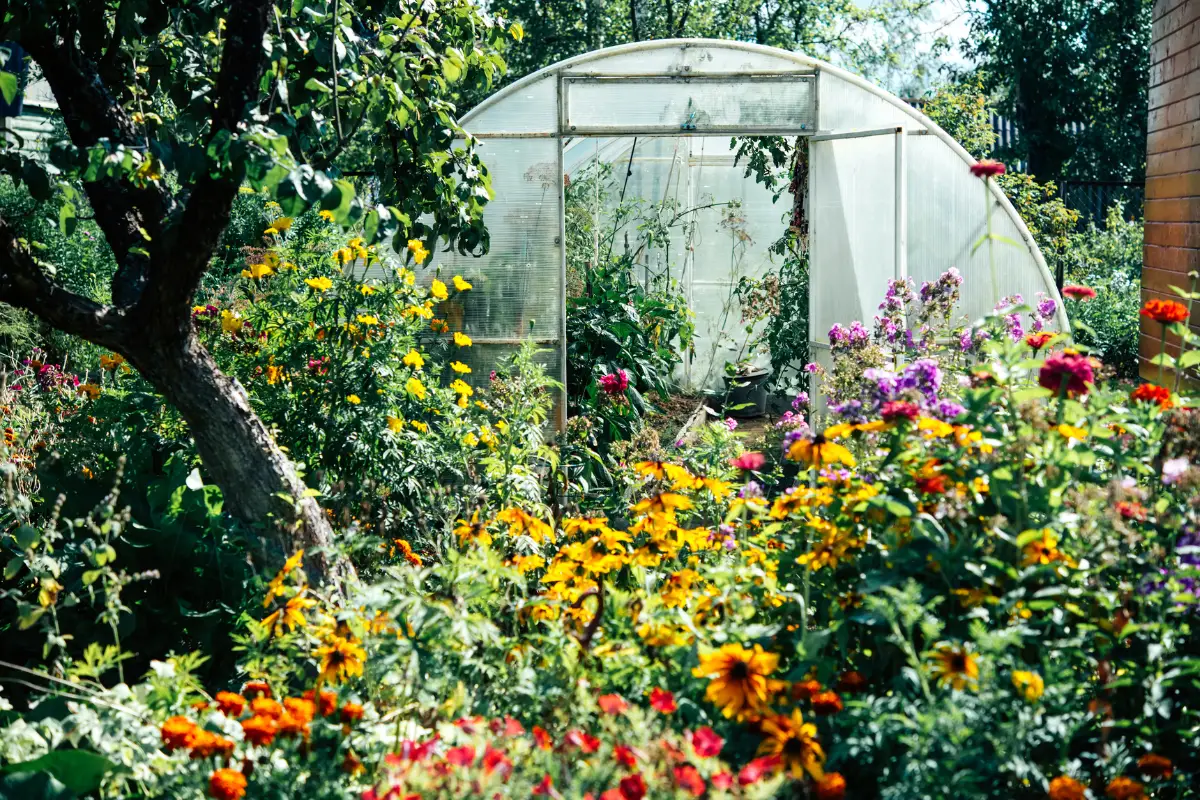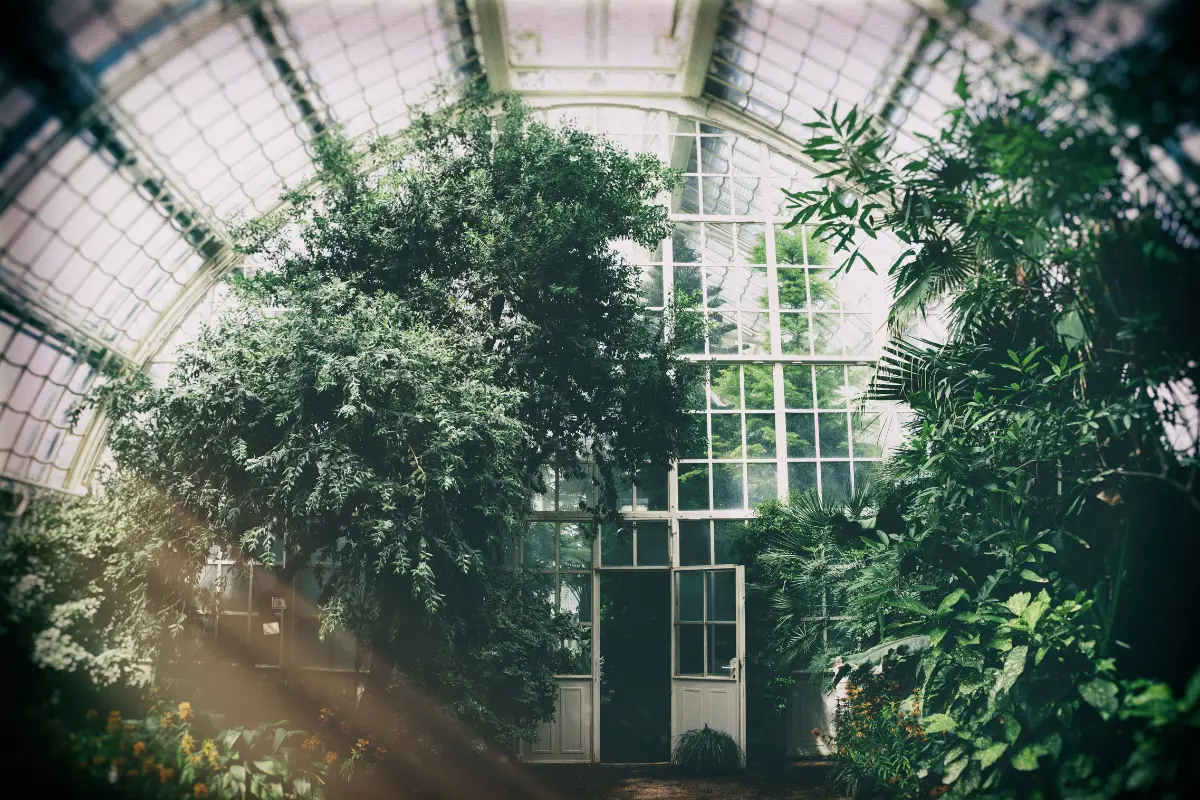Landscape fabric isn’t the best for your lawn or garden. Instead, try using alternatives including wood chips, mulch, compost, or burlap. These alternatives still allow water to pass through to the roots of your plants, unlike landscape fabric.
There are plenty more alternatives to landscape fabric that you can use. Each comes with its benefits, so you’ll want to choose the option that works the best for you.
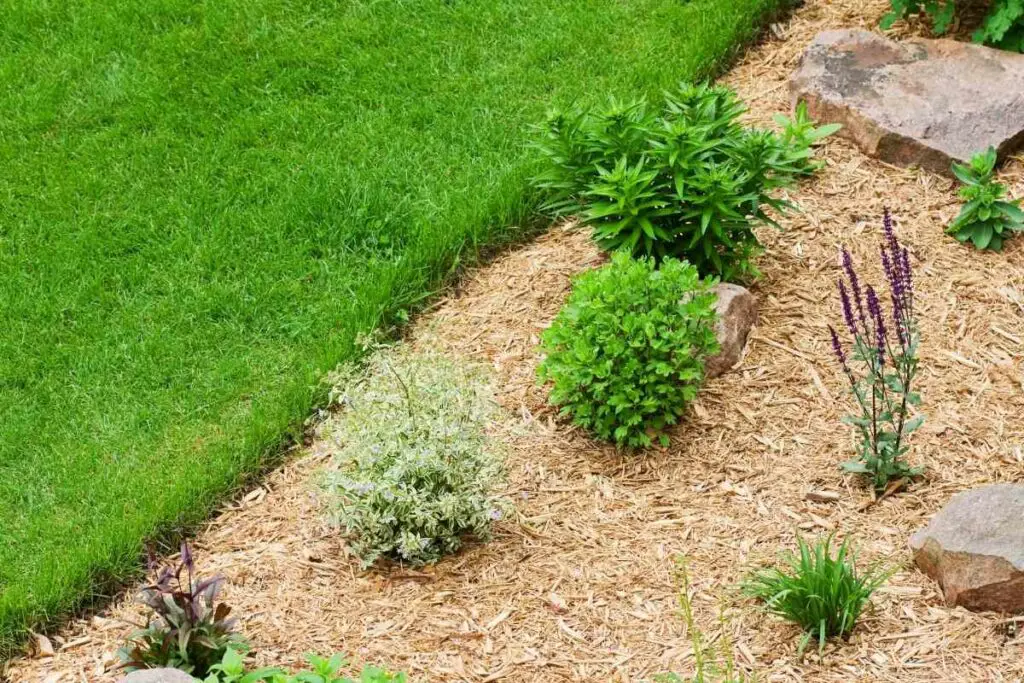
1. Wood Chips
One of the best landscape fabric alternatives would have to be wood chips. These chips work as a fantastic mulch and give your yard nutrients as they break down in the soil. Landscape fabric doesn’t decompose, so it never benefits your plants by adding nutrients.
Wood chips are also very easy to find. Plus, wood chips are very cheap! Many tree removal services can provide you with free or inexpensive wood mulch. Since they have it in abundance, many of these businesses want to get rid of their wood chips.
You can apply wood chips around your trees and bushes to prevent weeds from growing there. As they break down, they provide your shrubs with nutrients and enrich their soil. However, this material can be too heavy for vegetable garden beds. You’ll want to choose one of the other options for a food or flower garden.
Types of Wood Chip To Avoid in Gardens – like Black walnut chips are very bad for crops.
2. Bark or Pine Needle Mulch
Bark mulch is very similar to using wood chips. The material prevents weeds from growing and breaks down over time, providing the soil with more nutrients. You can find plenty of different thicknesses and textures, allowing you to choose one for your unique landscaping project.
If you plan on using bark mulch in your garden, you’ll want to ensure you do so after providing the soil with nitrogen. Bark can block nitrogen, causing issues with your developing plants. It works very well on trees and shrubs as well.
Pine needles are another common mulch that is better than landscape fabric. These needles add more nitrogen into the soil, making it better suited for your food gardens. They also won’t change your garden’s pH levels.
You can use a two to three-inch layer of pine needles safely. However, adding more than that could cause your plants to suffocate. If you don’t want to use these mulches, there are also many more for you to consider.
What are Other Types of Mulches?
There’s a variety of mulches available, so here are a few others that you can use instead of landscape fabrics:
- Straw
- Sawdust
- Shredded paper (or newspaper)
- Cocoa chips
3. Burlap
Burlap is a woven fabric, usually consisting of materials from the jute plant. You’ll want to use natural burlap in the garden so it doesn’t leak dyes, or other chemicals, into the soil.
Burlap is very effective at providing plants with protection. It even works like landscaping fabric, although it doesn’t come with any negative effects. Since it’s more porous than the fabric, it doesn’t stop water from getting into the soil.
Burlap can break down as long as you use the natural version. Synthetic burlap can contain plastics, which won’t decay with time. Plus, the plastic isn’t great for your plants.
You can also use burlap everywhere on your property. It’s perfect and safe to apply to your gardens and around trees and bushes. You’ll have plenty of options when using burlap, although it’s usually the most expensive option as a fabric alternative.
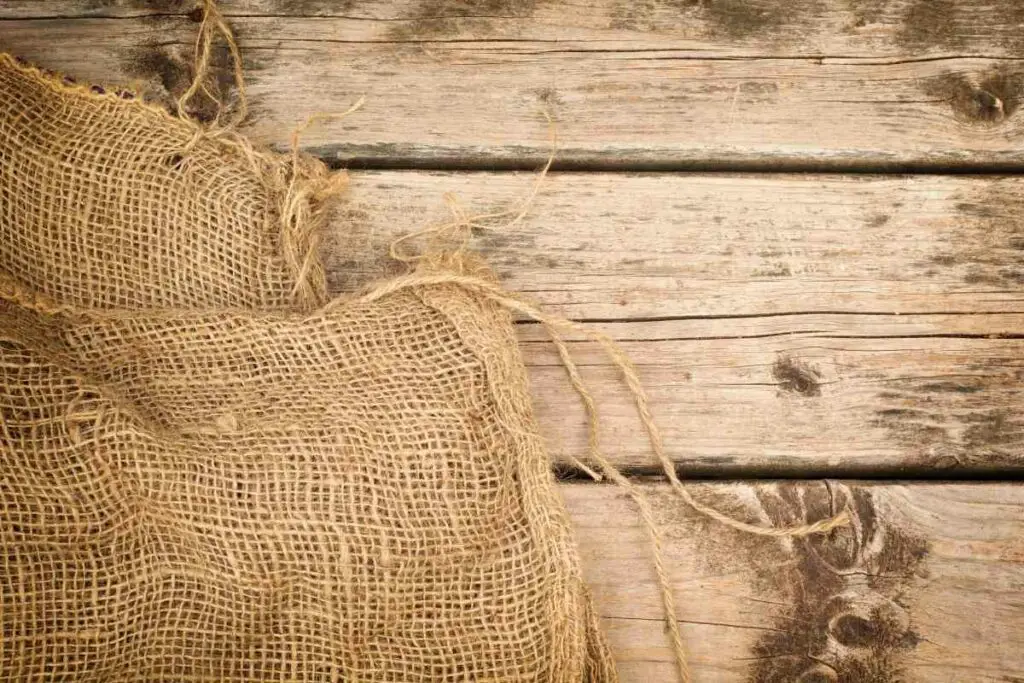
4. Cardboard
If you order many goods for your landscaping and gardening projects, you will surely have some cardboard boxes. Instead of throwing out your boxes, you can use cardboard as a landscaping fabric alternative.
First, remove the tape off of the boxes. Then, lay a layer down in your garden. Lastly, place an organic material on top to hold the cardboard in place- mulch is usually the best choice.
Cardboard breaks down into a great mulch while stopping weeds in their tracks. It can even boost drainage because earthworms love cardboard, causing them to tunnel around it. The worms greatly improve your soil too!
Overall, cardboard is a great option to consider. It comes with many benefits that you probably don’t realize at first.
5. Compost
Compost is another wonderful option to use in your landscaping projects. You can create your compost by using the organic waste you make at home, so it’s completely free for you to use. Once everything in your compost decomposes, you can add it to your garden.
Compost adds a ton of nutrients to the soil and stops weed growth. Plus, you can use it anywhere easily. Once the compost decomposes entirely, add a one-inch thick layer to your garden beds.
You can apply compost around trees and shrubbery too. You’ll want to use between one to two inches, depending on the size of the tree or shrub.
Common question – Can you compost ginger?
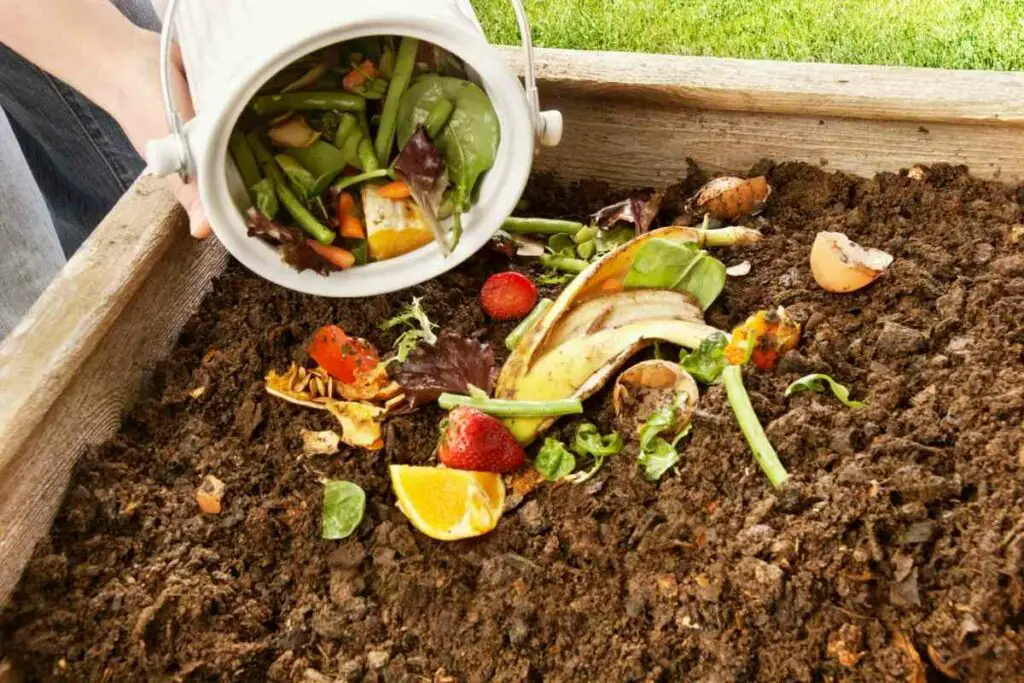
6. Shredded Leaves
Shredded leaves are also very easy to come by. Mulch the leaves, then collect them before applying them to your garden. You want to cut the leaves into small pieces before using them. Otherwise, they can suffocate your plants.
There are a few different methods that you can use to shred the leaves, including:
- Mulching the leaves with a lawn mower. Adding a bag attachment to the mower makes it very easy to collect the leaf pieces.
- Use a vacuum mulcher.
- Cut the leaves using a weed wacker.
Once you collect the leaves, you’ll want to apply them in two-inch layers to your garden.
7. Cut Grass
Lastly, cut grass works great at creating a weed barrier on your lawn. The grass is very nutritious for the plants you want to grow. However, you’ll want to make sure you use grass that you haven’t treated with herbicides.
You can put the cut grass you collect in your garden or around your trees and get great results. However, you only need to use a one-inch layer of cut grass on your landscape. As the grass decomposes, it releases foul smells when there’s too much of it.
Additionally, you want to leave the grass to dry for a few days before using it on your landscape. Otherwise, the grass clumps together and forms a strong layer over the soil, preventing water from getting to your plants.
Cut grass is a great option because everyone has access to it- and it’s free! Simply save your grass clippings the next time you mow the lawn. You don’t need much to use it as an alternative to landscaping fabric.
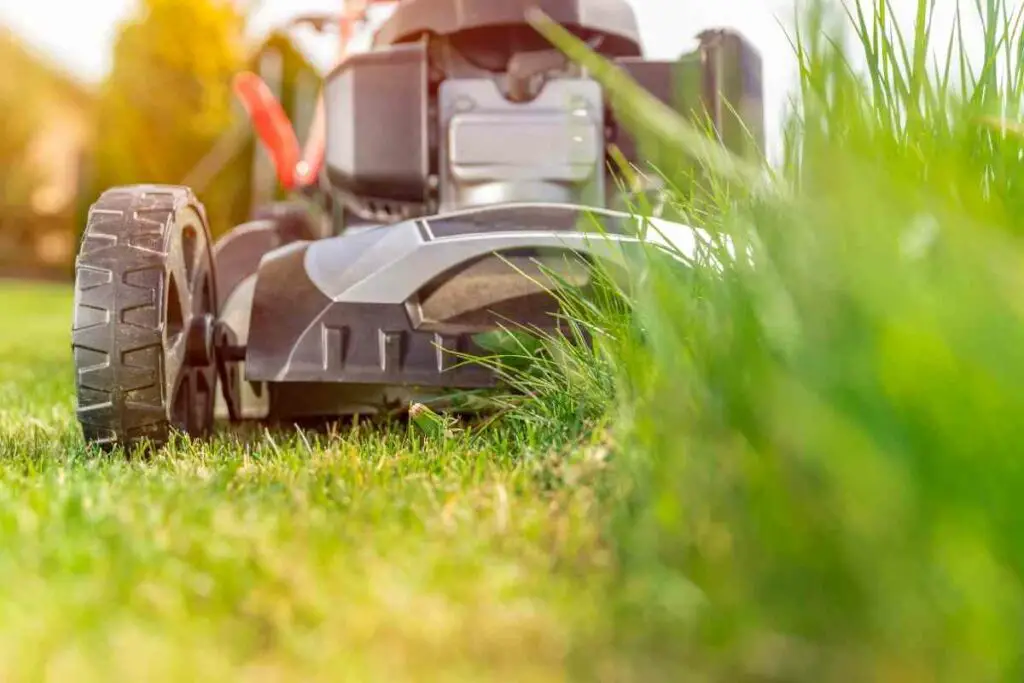
Why Shouldn’t I Use Landscape Fabric?
Landscape fabric isn’t good for everyone’s yard. It’s not a permanent solution to controlling weeds, but it doesn’t decompose in the ground. If you have a garden, it can get in the way of your plants getting the nutrients that they need to thrive.
Plus, the fabric eventually clogs, making it harder for oxygen and water to mix with the soil. It can even kill beneficial insects that help your landscape, including earthworms.
Landscape fabric also isn’t completely effective against weeds. It stops the ones currently emerging from the soil, but weeds will appear over the fabric layer over time. You’ll need to replace the material, which can be a huge hassle in many gardens.
In short, there are many reasons why you won’t want to use landscape fabric. While it can make your yard look nice, it causes a lot of complications and damage over time. Instead, you’ll want to use natural alternatives whenever you can.
Why Use Natural Materials Instead?
Natural materials are better suited for your landscaping projects when compared to landscape fabric. They can decompose and won’t block your plants from receiving the nutrients and water they require.
Plus, many natural materials, like leaves and cut grass, would get thrown out in garbage bags. You can prevent these items from occupying a lot of landfill space by repurposing them in your outdoor projects.
Overall, natural materials are much better for your garden. They all come with different benefits, so you’ll want to choose an option that’s easy for you to use. Many people prefer mulches or wood chips as their alternative to landscaping fabric.
Landscaping fabric can even kill your plants, so it’s not worth using!
When Can I Use Landscaping Fabric?
With all these great alternatives, you shouldn’t have to use landscaping fabric in your garden. However, that doesn’t mean you must avoid using this material altogether.
Landscaping fabric is great for use under stones. It prevents rocks, gravel, and pebbles from sinking into the earth. That makes it best for use with gravel pathways since the fabric prevents people walking over them from pressing the stones into the ground.
Plus, if you have to remove the gravel, it’s much easier when the fabric is already there underneath the layer. You won’t have to hunt through the grass to remove every stone you come across. Instead, you just have to gather up the landscaping fabric.
Rocks also don’t need any nutrition in the soil, so you can use landscaping fabric without worry.
Conclusion
There are plenty more alternatives to landscape fabric that you can use such as wood chips, mulch, compost, or burlap.
Each comes with its benefits, so you’ll want to choose the option that works the best for you and your garden. See a breakdown of each option above.
- How to Build a Planter Box for Bamboo: A Step-by-Step Guide

- Can Robotic Lawnmowers Handle Steep Slopes?

- Do You Need a Specific Lawn for a Robotic Lawnmower? Expert Advice

- Are Robotic Lawnmowers Safe for Pets and Children? Safety Features of Robotic Lawnmowers

- Why Use Robotic Lawnmowers? Advantages of Using a Robotic Lawnmower

- Is the GARDENA SILENO City 300 Cordless or Corded? A Clear Answer










